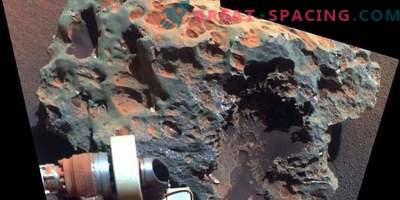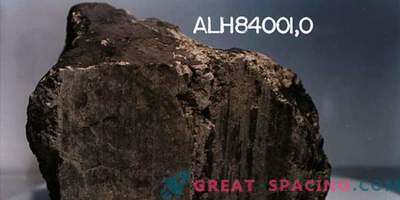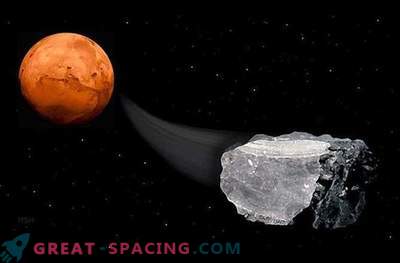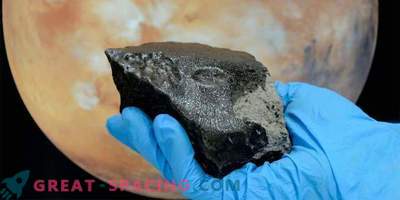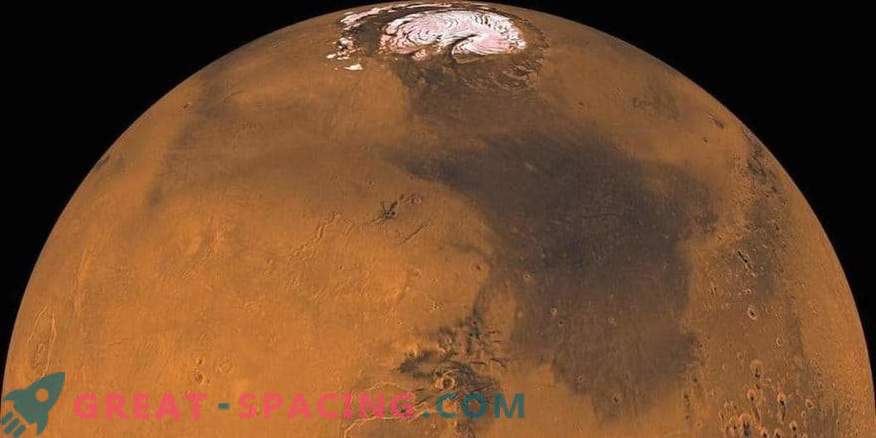
Researchers modeled the conditions in which part of the planet is thrown into space. These results may change the assumptions about the water reserve of Mars.
When studying Martian meteorites, it turned out that their mineral composition hints at the humidity of the Red Planet and its suitability for life in the past. This is the opposite of what was learned before, when the stones confirmed the dry history.
The results were obtained after researching the synthetic version of the vitlocite, a rare mineral on Earth. A group of scientists experimented with shock compression to simulate conditions when a Martian sample breaks out of Mars into space. Some of these meteorites reach the Earth, fall to the surface and accumulate.
The sample was studied using X-ray experiments at the Advanced Light Source Laboratory at Berkeley and the Advanced Photon Source Argonne National Laboratory. The results showed that the vitlocite becomes dehydrated and creates the mineral merrillite, which has been found many times in Martian meteorites.
“Even if part of the merrillite existed before, it drastically changes the water budget of Mars,” said Oliver Zhouer, research co-chair and professor at the Department of Geology at the University of Nevada in Las Vegas. If scientists confirm the truth of the Martian meteorites, it will solve the discrepancy between the studies of meteorites and the study of the planet itself. After all, meteorites hint at dryness, although Martian rovers have found plenty of evidence of water on the planet itself. Certain minerals (eg, hematite) are formed in the aquatic environment. Rover Curiosity also noticed rounded pebbles and other evidence of ancient streams.

The Mojave Crater on Mars, which is believed to be the source for some of the meteorites found on Earth, is depicted here as a rendering created by the HIRISE Mars Reconnaissance Orbiter.
Photos taken from orbit captured the ancient ravines, which were previously filled with water. Although the other assumptions were the idea of lava. In 2015, NASA announced that, based on research done by the Mars Reconnaissance Orbiter, salt water can flow today. Features called repetitive slope lines, usually formed in warmer weather, seem compatible with the flow of water.
Witlockte contains phosphorus (an essential element for life on Earth) and can be dissolved in water. Since merrillite was found in very many Martian meteorites, researchers believe that habitable conditions were common, at least in the region from which the stones came. “It remains to be proved whether Merrillite was really a Martian Vitlokite earlier,” said Chower. “We must go back to real meteorites and find traces of water.”
The limiting point is the origin of meteorites. Many found on Earth probably came from one region, but at different times: 150-586 million years ago. These samples were below the surface and were excavated when a blow against Mars pushed them into space. Since they rested under the “ground”, they represent the Martian environment in a more ancient past.
Scientists plan to continue work using meteorite samples at the end of this year. Independent research continues to learn more about past life on Mars. NASA plans to ship another rover in 2020 to collect samples and possibly save them for future missions. Then they will be delivered to Earth to be studied using sophisticated laboratory instruments that cannot be delivered to Mars due to their size and other factors.
